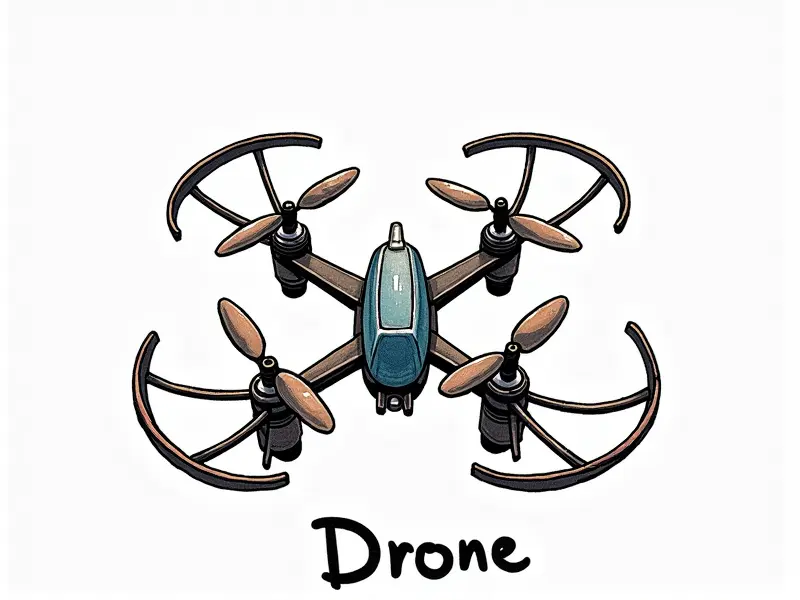What is FPV racing?

FPV Racing: The Ultimate Drone Sport
First-person view (FPV) racing has emerged as a thrilling and competitive sport that combines the excitement of high-speed racing with cutting-edge technology. FPV drones, equipped with cameras and transmitters, allow pilots to experience the exhilarating sensation of flying at breakneck speeds through intricate courses.
Introduction to FPV Racing Drones
FPV racing drones are small, lightweight aircraft designed for high-speed maneuverability. These drones typically feature advanced flight controllers, powerful motors, and high-resolution cameras that transmit live video feeds to the pilot's goggles in real-time. The combination of these components enables pilots to navigate through tight spaces and execute complex maneuvers with precision.
Why FPV Racing Is Taking Off
The popularity of FPV racing is soaring due to several factors, including accessibility, affordability, and the adrenaline rush it provides. Modern technology has made it easier than ever for enthusiasts to build or purchase custom-built drones, while social media platforms like YouTube and Twitch have created a vibrant community around this sport.
Accessibility
- DIY kits allow beginners to start with minimal investment.
- Pre-assembled models cater to those looking for an out-of-the-box experience.
Affordability
The cost of entry has decreased significantly over the years, making FPV racing more accessible to a broader audience. Kits and parts are widely available online at competitive prices, allowing enthusiasts to build their own custom setups without breaking the bank.
Getting Started with FPV Drone Racing
For those interested in diving into the world of FPV racing, there are several steps to follow:
Selecting Your Gear
- Drones: Choose a model that suits your skill level and budget.
- Goggles: Opt for high-quality goggles with low latency and wide field of view.
- Transmitter: Pick a transmitter that offers smooth control and responsive feedback.
Learning the Basics
Before hitting the track, it's essential to learn the fundamentals of FPV racing. This includes understanding drone components, flight dynamics, and safety protocols. Many online resources offer tutorials and guides for beginners.
What You Need for FPV Drone Racing
To get started with FPV racing, you'll need a comprehensive setup that includes:
Drones
- Frame: A lightweight frame designed for high-speed flight.
- Motors and ESCs: Powerful motors paired with efficient electronic speed controllers.
- Battery: High-capacity LiPo batteries to power your drone.
Goggles
- Resolution: Look for high-resolution displays for a clearer picture.
- Lens: Choose goggles with adjustable lenses and wide field of view.
Transmitter
- Range: Ensure your transmitter has sufficient range to cover the race course.
- Latency: Low latency is crucial for responsive control.
Mastering the Art of FPV Drone Racing
Becoming proficient in FPV racing requires practice, patience, and a willingness to learn from mistakes. Here are some tips to help you hone your skills:
Practice Makes Perfect
- Fly regularly: Consistent practice is key to improving.
- Start slow: Begin with simple maneuvers and gradually increase difficulty.
Stay Safe
Safety should always be a top priority. Wear protective gear, such as helmets and gloves, and follow local regulations regarding drone usage in public spaces.
FPV Racing: Speed, Grit, and Glory
The allure of FPV racing lies not only in the speed but also in the sense of accomplishment that comes from mastering this challenging sport. The adrenaline rush experienced during races is unparalleled, making it a thrilling experience for both pilots and spectators.
The Thrill of FPV Racing Explained
FPV racing offers an immersive experience that places you directly into the cockpit of your drone. As you navigate through courses filled with obstacles and tight turns, the rush of adrenaline is palpable. The sense of freedom and control over a high-speed machine is what makes this sport so captivating.
FPV Racing: The Future of RC Sports
The future of remote-controlled (RC) sports looks bright for FPV racing. Advancements in technology, coupled with growing interest from both enthusiasts and mainstream audiences, are driving the sport towards new heights. Expect to see more organized leagues, larger events, and increased media coverage as FPV racing continues its meteoric rise.
FPV Racing 101: A Beginner's Guide
If you're just starting out in the world of FPV racing, this guide will provide a solid foundation to help you get started:
Step 1: Understand the Basics
- Learn about drone components and their functions.
- Familiarize yourself with flight dynamics and control systems.
Step 2: Choose Your Gear Wisely
Select a high-quality setup that meets your needs and budget. Invest in reliable drones, goggles, and transmitters to ensure an optimal flying experience.
Step 3: Practice Regularly
- Fly frequently to build muscle memory and improve reaction times.
- Challenge yourself with increasingly difficult maneuvers and courses.
FPV Racing: Fast, Fun, and Competitive
In conclusion, FPV racing is a fast-growing sport that offers unparalleled excitement and competitive spirit. Whether you're an adrenaline junkie or simply looking for a new hobby, FPV racing provides the perfect blend of speed, skill, and camaraderie. So why wait? Dive into the world of FPV racing today!

